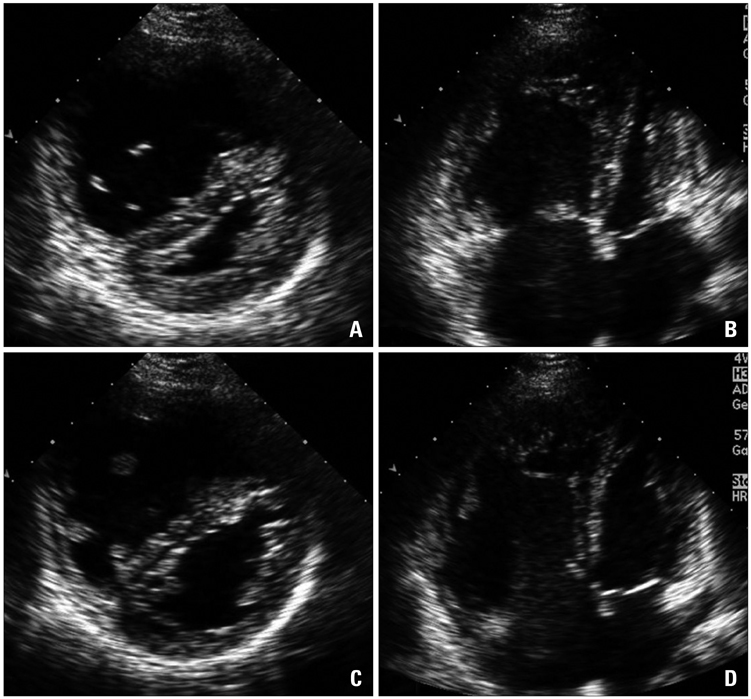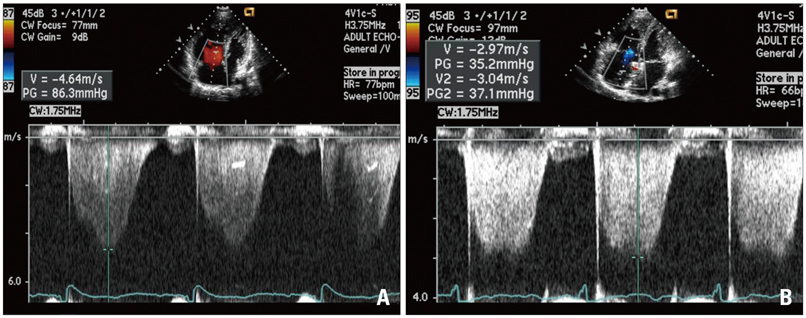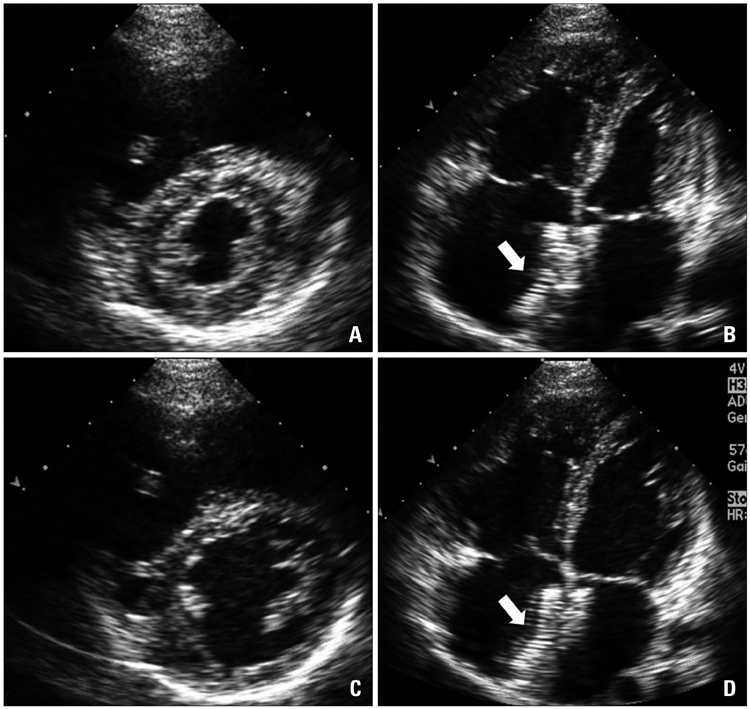J Cardiovasc Ultrasound.
2013 Sep;21(3):140-144. 10.4250/jcu.2013.21.3.140.
Device Closure of a Large Atrial Septal Defect in a Patient with Severe Pulmonary Arterial Hypertension after 1 Year Use of an Oral Endothelin Receptor Antagonist
- Affiliations
-
- 1Department of Internal Medicine, Sejong General Hospital, Bucheon, Korea. drjih@naver.com
- 2Department of Pediatrics, Sejong General Hospital, Bucheon, Korea.
- KMID: 1500194
- DOI: http://doi.org/10.4250/jcu.2013.21.3.140
Abstract
- The presence of severe pulmonary arterial hypertension (PAH) in patients with atrial septal defect (ASD) is still thought to preclude shunt closure, although there are several reports of good clinical outcomes after vasodilator therapy. We report the case of a young woman with ASD and severe PAH who was able to successfully undergo percutaneous shunt closure following 1 year use of the oral endothelin receptor antagonist, bosentan.
MeSH Terms
Figure
Reference
-
1. Konstantinides S, Geibel A, Olschewski M, Görnandt L, Roskamm H, Spillner G, Just H, Kasper W. A comparison of surgical and medical therapy for atrial septal defect in adults. N Engl J Med. 1995; 333:469–473.
Article2. Besterman E. Atrial septal defect with pulmonary hypertension. Br Heart J. 1961; 23:587–598.
Article3. Therrien J, Gatzoulis M, Graham T, Bink-Boelkens M, Connelly M, Niwa K, Mulder B, Pyeritz R, Perloff J, Somerville J, Webb GD. Canadian Cardiovascular Society Consensus Conference 2001 update: Recommendations for the Management of Adults with Congenital Heart Disease--Part II. Can J Cardiol. 2001; 17:1029–1050.4. Schwerzmann M, Zafar M, McLaughlin PR, Chamberlain DW, Webb G, Granton J. Atrial septal defect closure in a patient with "irreversible" pulmonary hypertensive arteriopathy. Int J Cardiol. 2006; 110:104–107.
Article5. Kim YH, Yu JJ, Yun TJ, Lee Y, Kim YB, Choi HS, Jhang WK, Shin HJ, Park JJ, Seo DM, Ko JK, Park IS. Repair of atrial septal defect with Eisenmenger syndrome after long-term sildenafil therapy. Ann Thorac Surg. 2010; 89:1629–1630.
Article6. Park YK, Park JH, Yu JH, Kim JH, Lee JH, Choi SW, Jeong JO, Seong IW. Transient use of oral bosentan can be an additional option to reduce pulmonary arterial hypertension in a patient with severe pulmonary arterial hypertension associated with atrial septal defect. J Cardiovasc Ultrasound. 2011; 19:159–162.
Article7. Dimopoulos K, Peset A, Gatzoulis MA. Evaluating operability in adults with congenital heart disease and the role of pretreatment with targeted pulmonary arterial hypertension therapy. Int J Cardiol. 2008; 129:163–171.
Article8. Balint OH, Samman A, Haberer K, Tobe L, McLaughlin P, Siu SC, Horlick E, Granton J, Silversides CK. Outcomes in patients with pulmonary hypertension undergoing percutaneous atrial septal defect closure. Heart. 2008; 94:1189–1193.
Article9. Yamauchi H, Yamaki S, Fujii M, Iwaki H, Tanaka S. Reduction in recalcitrant pulmonary hypertension after operation for atrial septal defect. Ann Thorac Surg. 2001; 72:905–906. discussion 906-7.
Article10. Jung JW. Pulmonary arterial hypertension of congenital heart diseases: from reversible pulmonary hypertension to eisenmenger syndrome. Korean Circ J. 2007; 37:287–297.
Article11. Diller GP, Gatzoulis MA. Pulmonary vascular disease in adults with congenital heart disease. Circulation. 2007; 115:1039–1050.
Article12. Galiè N, Beghetti M, Gatzoulis MA, Granton J, Berger RM, Lauer A, Chiossi E, Landzberg M. BREATHE-5) Investigators. Bosentan therapy in patients with Eisenmenger syndrome: a multicenter, double-blind, randomized, placebo-controlled study. Circulation. 2006; 114:48–54.
- Full Text Links
- Actions
-
Cited
- CITED
-
- Close
- Share
- Similar articles
-
- A Case of Sustained Severe Pulmonary Hypertension after Sugrical Repair of Atrial Septal Defect in a Patient with HIV Infection
- Large Atrial Septal Defect Closure in a Patient with Severe Pulmonary Arterial Hypertension
- Subacute, Silent Embolization of Amplatzer Atrial Septal Defect Closure Device to the Pulmonary Artery
- Transient Use of Oral Bosentan Can Be an Additional Option to Reduce Pulmonary Arterial Hypertension in a Patient with Severe Pulmonary Arterial Hypertension Associated with Atrial Septal Defect
- The effect of perioperative inhaled iloprost on congenital heart disease with severe pulmonary arterial hypertension





